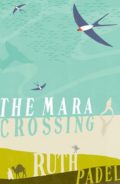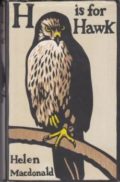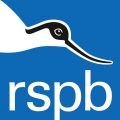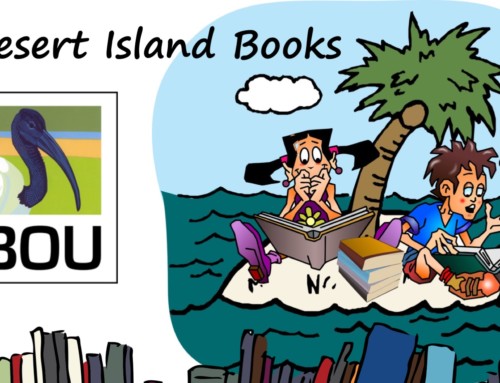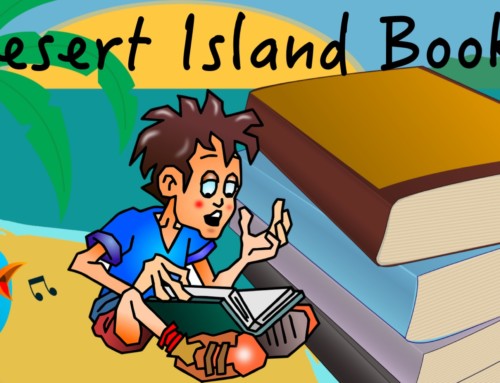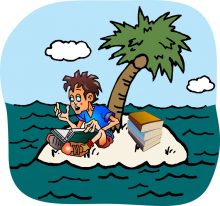
For this edition of Desert Island Books, we invited eight staff members of the RSPB’s Centre for Conservation Science to select one book each. And what a great mix of titles they’ve come up with! Enjoy.
Last Chance to See
Douglas Adams & Mark Carwardine, 1990, Ballantine Books
A journey to the most imperilled species of this planet, described by a non-biologist who generally writes science-fiction persiflage. Informative and hilarious at the same time. (Some of the species they visited have sadly now become extinct!).
Steffen Oppel, Senior Conservation Scientist
The Mara Crossing
Ruth Padel, 2012, Chatto and Windus
This beautiful and genre-bending book combines essays with poetry which consider migration in all its forms, from the cellular to the human, and all its timescales, from post-Ice Age tree immigration to Britain to the roughly once-a-decade summer irruptions of painted lady butterflies. Also contains birds!
Fiona Sanderson, Senior Conservation Scientist
The Seabird’s Cry
Adam Nicholson, 2017, William Collins
This is a beautiful book, describing the history and biology of 10 seabirds. It’s wonderfully written, and accompanied by maps, graphs, photographs, some lovely illustrations, and 353 endnotes; what more could you ask for? There’s a sting in the tale, and some hope, too.
Tom Finch, Conservation Scientist
H is for Hawk
Helen Macdonald, 2014, Jonathan Cape
By no means a classic ornithology book, and falconry is not something I strictly approve of. But the relationship between Helen and her Goshawk, as she dealt with the death of her father, resonated with me.
Michael MacDonald, Senior Conservation Scientist
Man and the Land
Dudley Stamp, 1955, New Naturalist
An objective assessment of man’s influence on Britain’s landscape which blew me away when I first stumbled across it. Deeply innovative in its use of citizen science in the 1930s, a positive human force of a geographer and geologist, relevant to schoolchild and professor, it clarified our direction on nature.
Gillian Gilbert, Senior Conservation Scientist
Kingbird Highway
Kenn Kaufman, 1997, Mariner Books
A story of natural obsession that got a little out of hand. Ken tells the story of his bird twitching year in North America involving sleeping under bridges, picking apples for money and eating cat food. After hitching 69,000 miles he discovers there is more to life than his ‘list’.
Rob Hughes, Conservation Scientist
Common Ground
Rob Cowen, 2015, Hutchinson
Somewhere between a memoir and natural history writing the author’s poetic exploration of his new patch, of his ‘edge-land’ really enthralled me. The message is simple – nature is not just in in the most remote places or in protected sites it is in the most overlooked places on our doorsteps, on the outskirts of our towns, we just have to step out and look for it and connect with it.
Daniel Hayhow, Conservation Scientist
Naturalist
EO Wilson, 1994, Island Press
This is the story of how the great American entomologist got interested in biology, and how from his research on ants he expanded his horizons to see the bigger picture, which eventually led him to become the father of biogeography and sociobiology.
Chiara Ceci, (formerly) Science Communication Executive

About the author
The RSPB Centre for Conservation Science aims to identify the most important problems, discover possible causes, test potential solutions and ensures that they work when implemented. They work throughout the UK and overseas alongside a wide range of funders and partners.
Tell us about your desert island books!
We’d love to hear about the books you’d take with you to your desert island. Format exactly as above. So send us your eight books (if you don’t want to just include ornithology titles, then we’ll accept contributions containing six ornithology and two ecology/natural history titles). Provide title, author(s), publisher, year for each title; max. 50 words on each book; your three ‘other’ items (excluding your binoculars and people), a short biography (max. 100 words) and a head and shoulders photo of yourself. We’ll source the cover images. Email your contributions to the
BOU Office. Contributions from BOU members will be
considered for our BOU member newsletter.




